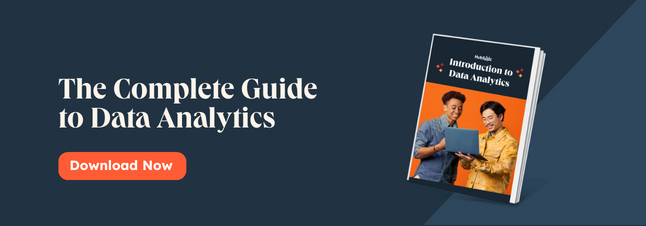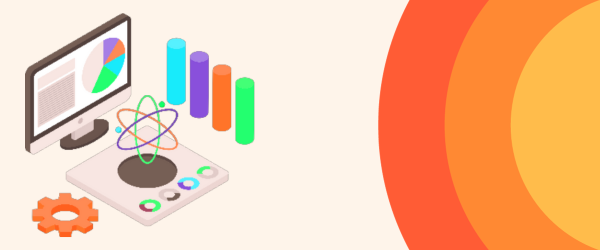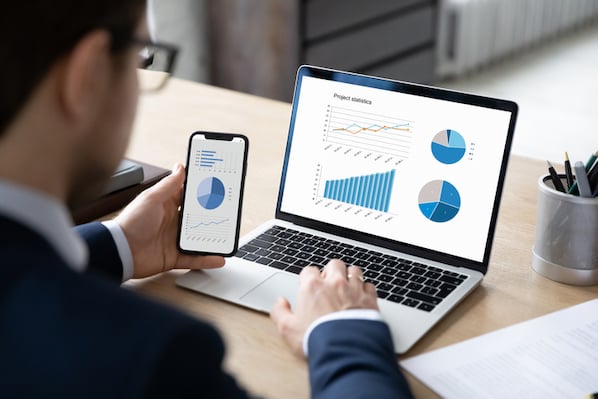What is data streaming?
Data streams combine various sources and formats to create a comprehensive view of operations. For instance, combining network, server, and application data can monitor website health and quickly detect performance issues or outages.
-2.webp?width=650&height=275&name=Data%20Stream%20(V5)-2.webp)
This video reviews the concept of data streaming and also provides an introduction to batch processing, which will be examined later in this section:
Stream Processing
Streaming the data is only half the battle. You also need to process that data to derive insights.
Stream processing software is configured to ingest the continual data flow down the pipeline and analyze that data for patterns and trends. Stream processing may also include data visualization for dashboards and other interfaces so that data personnel may also monitor these streams.
-1-1.webp?width=650&height=205&name=Data%20Stream%20(V5)-1-1.webp)
Data streams and stream processing are combined to produce real-time or near real-time insights. To accomplish this, stream processors need to offer low latency so that analysis happens as quickly as data is received. A drop in performance by the stream processor can lead to a backlog or data points being missed, threatening data integrity.
Stream processing software needs to scale and be highly available. It should handle spikes in traffic and have redundancies to prevent software crashes. Crashes reduce your data quality since the stream is not analyzed for however long the outage persists.
Benefits of Data Streaming
Data streaming provides real-time insight by leveraging the latest internal and external information to inform decision-making in day-to-day operations and overall strategy.
Let's examine a few more benefits of data streaming.
Increase ROI
Real-time intelligence gives companies a competitive edge by enabling quick data collection, analysis, and action. It enhances responsiveness to market trends, customer needs, and business opportunities, making it a valuable distinguishing feature in the fast-paced digitalized business environment.
Increase Customer Satisfaction
Responding quickly to customer complaints and providing resolutions improves a company's reputation, leading to positive word-of-mouth advertising and online reviews that attract new prospects and convert them into customers.
Reduce Losses
Data streaming not only supports customer retention but also prevents losses by providing real-time intelligence on potential issues such as system outages, financial downturns, and data breaches. This allows companies to proactively mitigate the impact of these events.
Next, let's review the differences between stream processing and traditional batch processing.
Batch Processing vs. Stream Processing
Batch processing requires data to be downloaded before it is analyzed and stored, while stream processing continuously ingests and analyzes data. Stream processing is preferred for its speed, especially when real-time intelligence is needed. Batch processing is used in scenarios where immediate analysis is not necessary or when working with legacy technologies like mainframes.
This video takes an in-depth look at these two concepts and their use cases:
Data Stream Examples
Data streams capture critical real-time data, such as location, stock prices, IT system monitoring, fraud detection, retail inventory, sales, and customer activity.
The following companies use some of these data types to power their business activity.
1. Lyft
Lyft requires real-time data to match riders with drivers accurately, displaying current vehicle availability and prices based on distance, demand, and traffic conditions. This data needs to be instantly available to set accurate user expectations.
After the rider selects a service level, Lyft uses additional GPS and traffic data to match the best driver to the rider based on vehicle availability, distance, driver status, and expected time of arrival.
Lyft uses location data from the driver's phone to track their progress, match them with other ride requests, and provide real-time updates on traffic conditions. They have optimized their processors to handle and aggregate these data streams for an enhanced customer experience.
%20(1)-1.webp?width=650&height=342&name=Data%20Stream%20(V5)%20(1)-1.webp)
2. YouTube
YouTube processes and stores a massive amount of data every hour due to the more than 500 hours of video uploaded every minute, according to Statista.
YouTube must ensure high availability to support creators' content and provide real-time data to viewers, including view counts, comments, subscribers, and other metrics. YouTube supports live videos with real-time interaction between content creators and viewers, requiring critical instant data transfer for uninterrupted conversations.
Speaking of YouTube, the presenter in this video walks through how to create an example data stream using PowerShell and Power BI:
Data Stream Challenges to Consider
Data streaming opens a world of possibilities, but it also comes with challenges to keep in mind as you incorporate real-time data into your applications.
1. Availability
Data needs to be accessed and logged in a datastore for historical context. If you can't view previous subscription periods, you may miss opportunities to offer valuable products or services based on a customer's purchase history.
2. Timeliness
Data streams must be constantly updated to avoid stale information and ensure that the user's actions in one tab are reflected across all tabs.
3. Scalability
To avoid data loss during spikes in volume or system outages, it's crucial to build failsafes into your system and provision extra computing and storage resources.
4. Ordering
Recording a sequence of customer interactions in your CRM provides deeper insights than just tracking individual web page visits. For example, you can see when a person has downloaded related eBooks, viewed a product demo, and visited the product page, giving you a clearer understanding of their interest in the product.
Power modern businesses with data streaming.
Data streaming is a crucial piece of modern businesses, providing real-time intelligence to guide decision making and allowing the organization to respond to changing conditions. As digitalization increases the pace of business and data volumes expand, the best companies will position themselves to take advantage of these opportunities with data streams and deliver new insights at scale.











